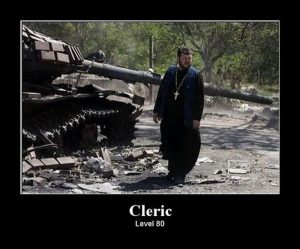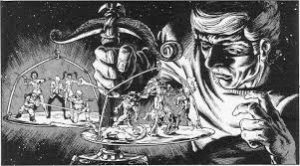So I’m heading to Spain for some vaca time but wanted to get a few blogs scheduled to post while I’m gone or getting prepped. I still have some work to do on 50 in 50 adventures so I thought I would post misc. points for thought and/or discussion. In no particular order:
- Noble Games has a “cloth bound” edition of Spell Law for $195 and a “leather bound” edition for $95. I have the a copy of the leather bound Rolemaster book which has SL, CL, AL. Anybody remember these Spell Law products? Did ICE do leather or cloth bound versions of other products?
- Why/how is the BASiL Essence Pt 1 being downloaded at a ridiculous rate? As of Thursday its averaging 50 downloads/day. It’s hard to imagine RMBlog has tapped into a secret reservoir of RM players. Some sort of ‘bot’ doing this?
- In reference to a recent blog post on Summoning. Peter, the idea that summoning a creature means drawing a concept or consciousness from a alternate plain that then manifests in a physical form is a powerful concept. For me it raises some setting issues: in reverse, how can players visit these alternate plains? Do they DeManifest there physical form while visiting these plains and then reconstitute upon returning? (btw: read the Punch Escrow for some thoughts on this via a technological solution).
- Following up on #3, we are confronted with the setting driving the spell mechanics. Yes, once RM was a bolt-on for DnD, but those days are long gone. RM needs to pick a setting (Shadow World by default given the amount of existing material) and build the rules around the physical and meta-physical world described.
- New games are as much about the setting that they create, or imply, than the actual game mechanics. NO ONE is really choosing RM first and then selecting a non-conforming game environment, barring an experienced minority. The new reality is that rules and setting are synonymous. Based on some ‘googling’ many RM users initially adopted RM to play MERP. Since MERP is no longer an option, my advice is to put resources into a setting and then adjust a default rule set to support it. That’s what I have done with BASiL(Brian’s Alternate Spell Law) and SWARM (Shadow World Alternate Role Master). Much of what I did with those projects was to adjust RM to integrate with Terry’s SW. Shadow World sets meta-physics for magic and death, diverges from standard RM profession standards, incoporates hi-tech, connects with Space Master etc. My theory is that creating a great adventure setting drives rule adoption. I’m not sure continually rewriting rule sets (planned obsolescence) drives new customer growth.
- 50 in 50 is starting soon. Many of these are simple ideas than full fledged adventures, but I’m excited that RM Blog will be publishing real content.
- I’m even more excited for the RM Blog 50th level adventures.
- One profession that really struck me when I first started with RM was the Astrologer. It was quite different than the D&D tropes we left behind, and IIRC, city maps in the early MERP products had color keyed buildings for Astrologers. I’m not sure if Astrologers fit into the Tolkien world, but by integrating them into the world build, it inferred the profession with social context. Interesting.
- I’ve read a lot of good blog posts about waiving the need to roll dice for simple actions as well as simplifying rules to reduce dice rolls. I agree with the former but not the latter. Players like to roll dice! They are chomping at the bit to make rolls during combat! Is that just my group?
- After “50 in 50” and “5 of 50” I had a few other themed adventure challenges: “5 Adventures for Evil Groups”; “5 Grand Heist Adventures”, “5 at 50′, (underwater adventures)”.









